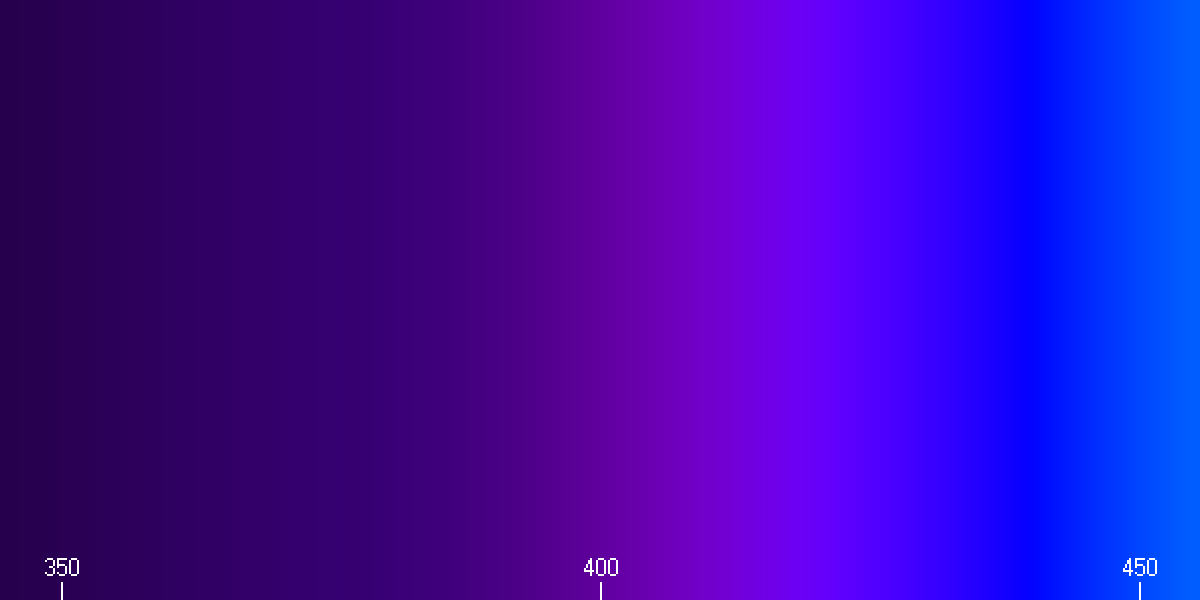 Many years ago, I said to a colleague, “What a beautiful shirt! Royal blue is a good color on you.” She replied, “What do you mean blue? This shirt is purple!” After some experimenting, we discovered that we consistently differed on the line between blue and purple. In extending our experiments to co-workers, we found that I was the outlier—most people saw blue and purple more like my colleague. It turns out that such differences are real; the proteins that detect light in our eyes can be tuned to slightly different wavelengths, and we can each have slightly different ratios of the three proteins that allow us to distinguish colors. I really do see blue where most people see purple. (Do you? Here’s a Buzzfeed quiz.)
Many years ago, I said to a colleague, “What a beautiful shirt! Royal blue is a good color on you.” She replied, “What do you mean blue? This shirt is purple!” After some experimenting, we discovered that we consistently differed on the line between blue and purple. In extending our experiments to co-workers, we found that I was the outlier—most people saw blue and purple more like my colleague. It turns out that such differences are real; the proteins that detect light in our eyes can be tuned to slightly different wavelengths, and we can each have slightly different ratios of the three proteins that allow us to distinguish colors. I really do see blue where most people see purple. (Do you? Here’s a Buzzfeed quiz.)
As I look back over 2017, it seems like a year in which we were all repeatedly reminded that everyone does not perceive the world the same way. Women do not experience the workplace the same way men do. People of color have a different experience of walking (or driving!) through the world than white people. And so on. It’s natural for all of us to assume that our perceptions are universal, so it often takes a shock, and then a concerted effort, to put ourselves in someone else’s shoes and acknowledge that they experience the world differently. But none of us are immune; the evidence is incontrovertible that we are all deeply influenced by the surrounding culture, subject to implicit biases that render us all, to some degree or another, racist, sexist, and prejudiced in other ways as well.
Our automatic reaction to such evidence is defensive: none of us want to think that our perceptions of the world are biased. What the social science shows, however, is that categorizing people is human nature, and our categories are informed by our surrounding culture. This is not inherently good or bad. The question is what you do with that knowledge. Once you know that you don’t see the world the same way as someone different from you, how do you adjust your thinking? How do the two of you, seeing the world differently, come to a common understanding of how to evaluate reality, and then, if need be, change it?
You may be asking yourself what this has to do with science education, and with the mission of NCSE. The recognition that we don’t all see the world the same way is especially important when it comes to evolution and climate change, the foci of NCSE’s mission. Students are especially likely to come into classrooms with deep misconceptions about these topics. Many students believe that the findings of evolutionary science are incompatible with their religious faith or enter the classroom with the misconception that the science of climate change is unsettled, or that humans cannot possibly have more impact on climate than natural cycles. This isn’t their fault. But it’s a problem. And it’s a problem that NCSE exists to address.
It doesn’t really matter that you and I don’t see blue and purple the same way. What matters is whether you and I can agree as to how to figure out why we don’t see blue and purple the same way. Empathy shows us that our differences are real; science shows us a way to common ground. And investing in science education will result in a generation of citizens who will face problems not by dwelling on their disagreements but by asking, “What evidence can we all agree to, and what evidence do we need to find, in order to address the challenges before us?”
Image: the spectral range of the violet filter on the Imaging Science System aboard the Voyager 1 and Voyager 2 spacecraft, by Xession, via Wikimedia Commons, used under the Creative Commons Attribution 3.0 Unported license.

